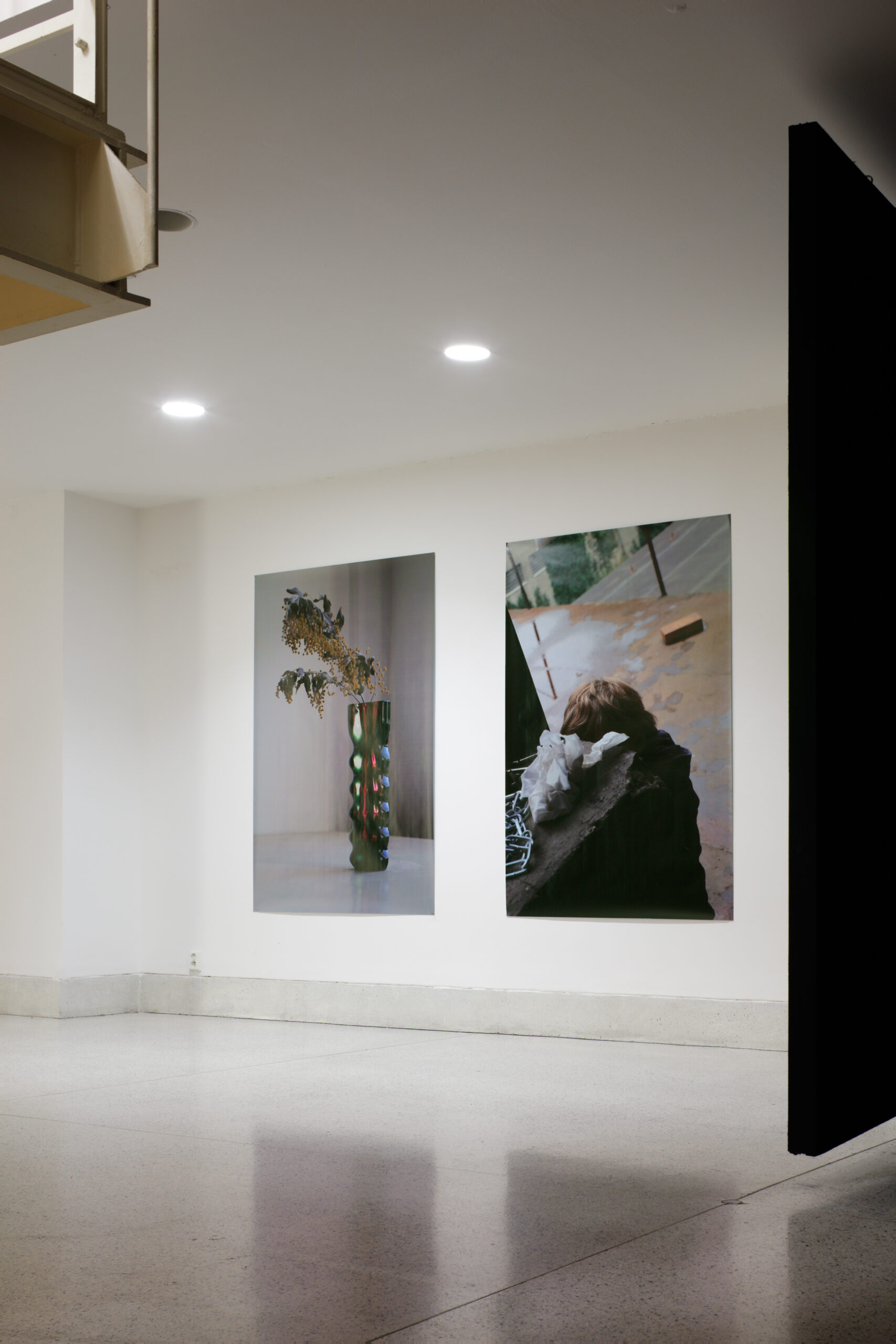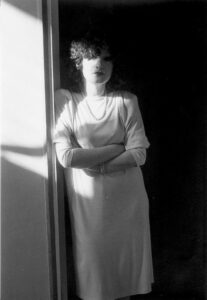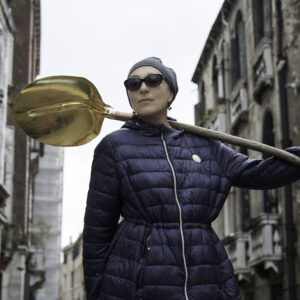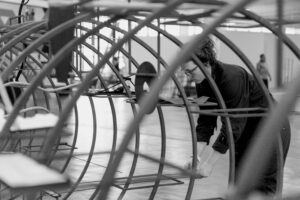Markéta Othová
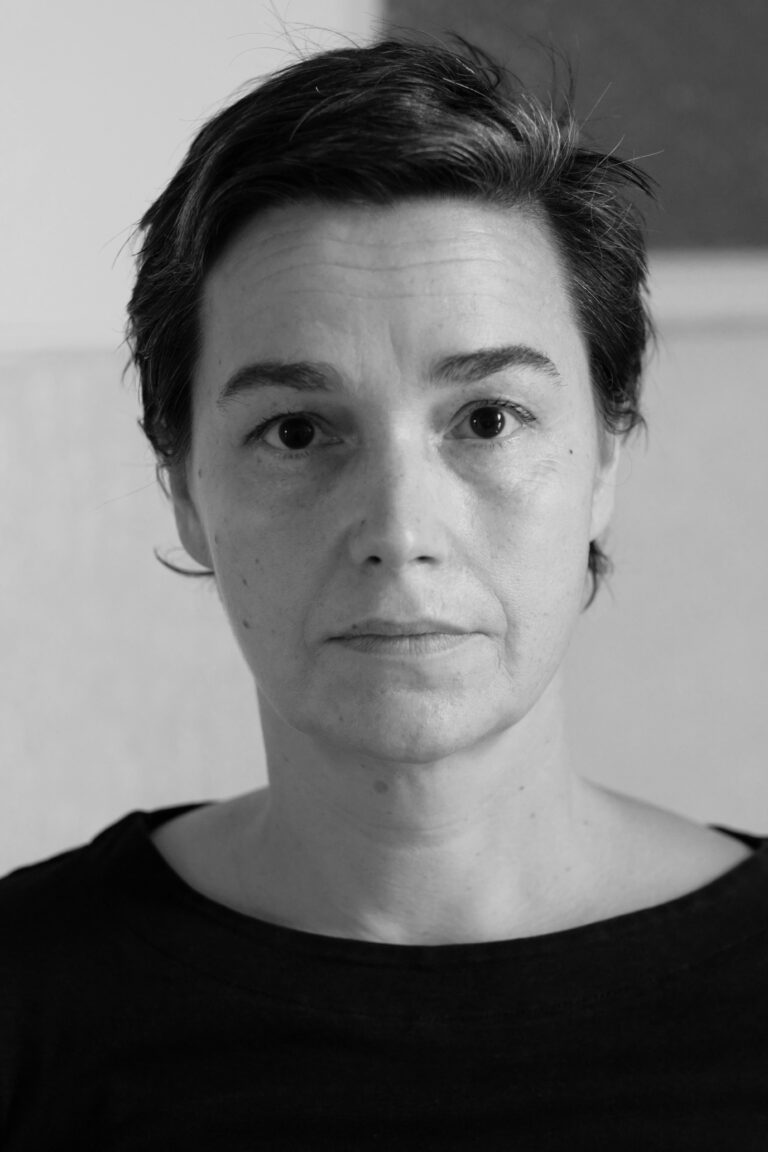
– born in 1968, entered the Czech art scene in the 1990s when she began her studies at the Academy of Arts, Architecture, and Design in Prague, first in the Studio of Film and Television Graphics and later in the Studio of Illustration and Graphics. After graduating, she completed a three-month internship at the Institut français de Prague in Paris (1994). In 1999 and 2001, she was one of the finalists of the Jindřich Chalupecký Award and in 2002, she became its laureate. Recently, she has been awarded the Michal Ranný Award. In her approach to photography, she transcends her own media technique towards its instability and technical perfection. In her series Leçon de la photographie (2007) and Mayday (2004-2007), she focuses on the media legacy of modernity and its current relevance. The temporal dimension of photography, as an imprint of the moment, is often complicated in the image as if the memories were not tied to the particular events in the past.
I don’t even know how it all came about. Whether there was an initial ambition to become an artist. Probably yes, because I attended an art high school and the Academy. In the end, I did become an artist, even though I do not claim to be one nor would I want to be one. It happened as this acclaimed series of contingent events. A person takes a photograph of something, and someone allows them to exhibit it or even then publish it… somebody else writes something about it, and another person then describes it… and that’s about it. Veronika Bromová took me to the first exhibition, and then I decided to take the 35mm photograph and enlarge it to an unreasonable scale. I didn’t like the small format, the format of the photograph as an artefact. I made it very large so one could just walk past it and it looked more like scenery rather than a photograph1. That was it and it stayed with me for ten years. David Černý once asked me if it wasn’t a bit monotonous…
I am a child of parents-artists. My father was a glassmaker and my mother is a sculptor2. So it was perfectly normal for me to go to a school where I would draw, and then come back home, sit and draw there as well. Then enrol at the university and draw again. Nobody cared much about what would come next, not even me. I always admired my classmates who went to art school, even though their parents were not artists. The determination they had to put on.
First I studied animated film at the Academy of Arts, Architecture, and Design in Prague. My parents recommended that I study in the studio of Miroslav Jágr, who was deemed to be one of the better members of the faculty. However, before the revolution, there were better teachers in high schools than in universities. I was in the class with Ivan Mečl, Veronika Bromová, Kateřina Vincourová, Filip Turk, Jakub Stretti and Petr Horáček. We were such a great group. The university was somewhat of an annoyance, and even though it was necessary to graduate if one wanted the possibility of the so-called free profession, which meant that one was no longer obliged to enter the workforce and could maintain this slight freedom (which had nothing to do with a reluctance to work), after two years of studies I wanted to drop out. With the revolution, there was an uprising regarding the pedagogical staff of the school. We invited the people that we respected to apply for the open call. Jiří Šalamoun came to the studio of illustration and I transferred to his class.
It was fantastic. It was free. Jiří Šalamoun is a very educated, eloquent man, and he would recommend us books, films and artists whose work we should have been acquainted with. Actually, he used to talk to us about everything. He passed along his love for book editing to us but at the same time, he would let us do what we ourselves wanted, even though the studio was officially called the Studio of Illustration and Graphics. That was the time when I started taking photographs3.
I remember that at the final evaluation, which the professor wrote to me regarding my diploma work at the end of my studies (my opponent was Adriena Šimotová because even though I had started taking photographs, drawing still prevailed in my practice) was a kind of prophecy of my future pedagogical career. I remember thinking to myself, “Just wait, what of an artist I will be!”
Perhaps that was the main reason for that certain initial perseverance.
Marek Pokorný once wrote that my photographs look as if they were taken by blind children. Then I looked at such images, and I was amazed and shocked at the same time, that the children can take pictures even though they can’t see. They can probably feel the energy of the object in front of them and then point the camera in that direction towards it. But they will never see the photograph themselves… I was very happy with that comparison — it was an honour. I would like to remain worthy of it.
On the other hand, some of my family members have been alarmed by the fact that situations like these are possible. How come this work hangs in the gallery when I was told that it cannot be developed in the photo lab because it is a poor underexposed image…
Well, that takes a bit of struggle…
I don’t experience it so intensely anymore (and they’re probably used to it by now as well). That was back then when black and white photography was my life.
When I recapitulate, I probably used to take pictures of the things I wanted to experience. Well, not entirely nor literally, but I am certain that at least partially. It bothered me when someone described my photographs as diary entries. Even though they probably could be a little bit like that…
The image of a child running into the distance had a great effect on me. But it wasn’t merely the child in the sense of me wanting a baby — it could have been a woman or a man turning around. I would intensely imagine the lives of the people who appeared in my photographs.
It aggravated me when someone wanted to buy one of them. I associated myself with them and it felt impertinent to sell them. So perhaps it truly was a diary? I have sold only a couple of photographs and I make a living from graphic design and editing of printed material. However, recently it has happened several times that various institutions wanted to purchase some of my work from the 1990s… The work has become petrified and will be in a museum. As a period statement. Something from the nineties — it doesn’t concern me that much anymore. But I don’t want to become an institutional artist. I enjoy staying in the background4.
When I imagine the reality of twenty years ago, it amazes me that such a long time has passed since I walked down these streets, saw those things and took those photographs… the inner feeling remains the same, the facts of life are different. I realised this when I remarked “wow, Peugeot 405…” or something in that sense, while looking at a photo, exactly from that decade. It was a photograph of children playing in a small field under a tree… in the middle of a crowded parking lot… It was taken in France5.
My archive is actually a documentary. This realisation that this was no longer the lived reality was shocking.
I view my archive as a stranger.
Today it is no longer truly possible to take photographs since there are so many pictures everywhere. Everyone takes so many photos. Everyone expresses themselves through images. But maybe that’s exactly what we wanted? It has become hard to come up with another photograph when, in fact, everyone has their own.
It’s actually fantastic that people communicate through images on such a massive scale. I realised that I used to take analogue photographs in the same manner in which I use my mobile phone today. For example, a cup of coffee… However, now I would first consider whether to take a picture of it. It is also a bit of a change, this feeling of questioning whether something is worth photographing. I used to take pictures of almost anything and everything was important somehow.
I do like Instagram even though I wouldn’t want to connect with this virtual world. It scares me. That speed of sharing. Even before one realises it, they are already sending an image somewhere — in fact, they are sending it faster than they are living it as the experience comes only through sharing… and expecting… and I would not like to live like that.
When we started using the internet a long time ago, I thought to myself how great it would have been if I could hang a photograph somewhere like that and show it to my friends. These wishes have been fulfilled.
I started taking photographs with a digital camera when my son was born. With time constraint it was not possible to use an analogue one. Soon it became suitable to me that the camera was so fast and the image was immediately visible. The baby was also not so blurred. The fundamental problem was that, unless it was a baby that was being photographed, the digital camera was so technically proficient that it made no mistakes that I have always liked. I enjoy even the badly exposed pictures. Not that I tried to take them deliberately this way. Despite my utmost efforts, I would make mistakes in the process and then I had no choice but to fall in love with what I had. I have compiled and I am still assembling units by browsing my archive, searching for various photos that correspond to what I would like to say at the given moment, forming sentences out of photographs. When using a digital camera, all the pictures are actually fine and working with the digital archive is also different as it is more factual.
I myself am probably a melancholic person, but I didn’t want my old work to be melancholic, even though it has been interpreted that way. Melancholy was not my aim. That’s the reason why it appealed to me that photographs became cleaner and more technical. I mostly take photos in colour now, because colour photography is more common than black and white. Black and white photography is already a decision. I can already see everything in colour, not in black and white anymore as before. The path to digital photography for me was through the process of scanning. It was a painless transition when I was already working with the scanner even though I was still using film. I wanted to create copies of things that already appeared in colour, so it was logical that the scan would also be in colour if it were to be the exact copy. I enjoyed working with the object without any aesthetic considerations. I just place the object in the middle of the A4 format, press the button and the image is copied. A photogram can be beautiful in this sense.
Scanning also allowed me to leave the large format behind (in 1994 I chose the format 110 x 160 cm and I exhibited the created large sets only once as they were created depending on the space). The resulting prints of the scans were 1:1, meaning A4. I also started to carve out the details of the enlarged images, placing them in the A4 format6.
I myself collect pictures, postcards, clippings. I like them on paper, in hard copies7. I also collect digital images but I find that some of them have to be printed and pasted on paper since complete virtuality does not satisfy me. It’s also difficult to get rid of things like memories, and one probably has to do it immediately or never. When there is too much of it, it begins to slightly annoy the lived reality. Too much memorabilia. Mikuláš and I have drawn so much and we have made so many things in these ten years of his childhood life… and these things are impossible to throw away. It’s out of the question to dispose of them, maybe burn them so they disappear in their entirety8. First, take a photo of them and then burn them.
I try to avoid exhibitions of women in art or exhibitions with the so-called feminine themes. I am irritated by this exclusion. The gender of the author of the work cannot be the determining factor. Counting how many women and how many men participate in a show is absurd. The pursuit of equality cannot extend all the way to this. However, this aversion does not apply to the historical mapping of the work of women who have been forgotten, of course. I am also bothered by the thematic exhibitions with titles such as “Woman in Photography.” If you had not asked directly, I would not have mentioned this topic at all. Motherhood does change a person, from a free individual they become a caregiver, overcome by fear and emotion. But it’s also a lot of fun. It’s great to go back to the things we once loved. Be able to tell it all once again. Read fairy tales again. But shaping someone, passing on information about the world is also a large dilemma. I was careful not to raise my son in the stereotypes of “this is for boys” and “this for girls” from an early age.
I will never again sit alone in a one-bedroom apartment with a cigarette and write (or sleep). So when someone has children and a family and they still write a novel — I don’t get it. I think it can be done more so by a man, whom the event of becoming a parent does not transform so profoundly. He is not so engaged in fear, or in play… This also of course depends on individual situations. The importance of things changes over the course of life and this fact affects me somewhat counter-artistically. Suddenly it doesn’t matter at all, one simply watches their child grow. It’s a nice life. My work is also different now as if it didn’t concern me so personally anymore — and that suits me too. It’s lighter and it doesn’t have to be an internal reflection, just a comment. Of course, it is not only related to motherhood, but also to age. The reaction to the surrounding world is changed. The older I get, the more I feel like a woman. When I was younger I probably subconsciously wanted to match my male friends in their artistic activities. I wanted to be like a man, even though I looked like a woman and now that I am starting to look like a man, I want to be a woman.
It is important that one is not unhappy because life is so short (and it is relatively unfortunate).
The text was created in collaboration with Eva Skopalová (2021).
1Image: Markéta Othová, The Silence of The Lambs I, 1994, Young Art Biennale, House at The Stone Bell, foto Martin Polák. Courtesy of the artist.2Image: Markéta Othová, 1933, 2015, Karlin Studios, foto Martin Polák. Courtesy of the artist.
3Image: Markéta Othová, Book World, 2019, Fotograf Gallery, Praha, foto Martin Polák. Courtesy of the artist.
4Image: Markéta Othová, Her Life 1998, National Gallery in Prague, foto Martin Polák. Courtesy of the artist.
5Image: Markéta Othová, Untitled, 2014, National Gallery Nová Perla (Divus), foto Markéta Othová. Courtesy of the artist.
6Image: Markéta Othová, Babiččin pásek z letních šatů [Grandma's summer dress belt], 2018, wallpaper, galerie Artmap, Praha, foto Martin Polák. Courtesy of the artist.
7Image: Markéta Othová, 1990-2018, 2018, Fait Gallery, Brno, foto Martin Polák. Courtesy of the artist.
8Image: Markéta Othová, Untitled, Moving Image Department – 6th Chapter Inner Lives (of time), 2016, Národní galerie v Praze, foto Martin Polák. Courtesy of the artist.
– narodila se v roce 1968, vstoupila na českou uměleckou scénu v 90. letech, kdy začala studovat na Vysoké škole uměleckoprůmyslové, nejprve v Ateliéru filmové a televizní grafiky později v Ateliéru ilustrace a grafiky. Po dokončení studií absolvovala tříměsíční stáž Institut français de Prague v Paříži (1994). V roce 1999 a 2001 byla finalistkou a v 2002 laureátkou Ceny Jindřicha Chalupeckého. Je čerstvou držitelkou Ceny Michala Ranného. Svým přístupem k fotografii překračuje vlastní techniku média vstříc k jeho nestabilitě a technické dokonalosti. Ve svých cyklech Leçon de la photographie (2007) či Mayday (2004-2007) se věnovala modernistickému odkazu média a jeho aktualizaci v současnosti. Časový rozměr fotografie, jako otisk okamžiku, se na snímcích často komplikuje jako by vzpomínky neměly své události v minulosti.
Ani nevím, jak to celé vzniklo. Jestli tam byla nějaká původní ambice být umělkyní. Asi ano, protože jsem chodila na uměleckou střední i vysokou školu. Nakonec jsem se stala umělkyní, i když tvrdím, že jí nejsem nebo nechci být. Je to ten pověstný sled náhodných událostí. Někdo něco fotí, někdo jiný mu to umožní vystavit, a pak třeba publikovat…, někdo o tom něco napíše, někdo jiný to pak opíše… a je to. Na první výstavu mě vzala Veronika Bromová, tehdy jsem se rozhodla fotografii z kinofilmu až nesmyslně zvětšit, protože se mi malý formát (formát fotografie jako artefaktu) nelíbil, tak jsem to udělala hodně velké, aby se kolem toho dalo jenom tak projít, aby to působilo jako výjev, ne jako fotografie1. To bylo všechno, s tím jsem vydržela deset let. David Černý se mě jednou ptal, jestli to není trochu monotónní…
Jsem dítě rodičů-umělců, tatínek byl sklář a maminka je sochařka2. Takže bylo pro mě úplně normální jít na školu a tam kreslit, a pak sedět doma a tam si kreslit. Pak jít na vysokou školu a tam zase kreslit a co bude dál, o to se nikdo moc nestaral, ani já. Vždycky jsem si vážila spolužáků, kteří šli na výtvarnou školu, přestože jejich rodiče nebyli výtvarníci. To odhodlání, které museli nasadit.
Studovala jsem nejprve animovaný film na UMPRUM, rodiče mi doporučili studovat u Miroslava Jágra, který se jevil v tehdejším profesorském sboru jako člověk dobrý. Před revolucí byli ale na středních školách lepší učitelé než na vysokých. Byla jsem v ročníku s Ivanem Mečlem, Veronikou Bromovou, Kateřinou Vincourovou, Filipem Turkem, Jakubem Strettim, Petrem Horáčkem…, byli jsme skvělá parta. Vysoká škola tak byla potom naprostý průšvih, ale bylo nutné ji absolvovat, kvůli možnosti tzv. svobodného povolání, vyvázání se z povinnosti nástupu do zaměstnání a zachování si mírné svobody (nemá to nic společného s nechutí pracovat), po dvou letech jsem ale chtěla odejít. S revolucí nastal převrat i v pedagogickém obsazení školy. Pozvali jsme na konkurzy lidi, kterých jsme si vážili. Do ateliéru ilustrace tak přišel Jiří Šalamoun a já jsem šla k němu.
Bylo to fantastické. Svobodné. Jiří Šalamoun je velmi vzdělaný, sečtělý člověk, doporučoval nám knížky, filmy, umělce s jejichž prací bychom se měli seznámit…, povídal si s námi vlastně o všem. Předával nám svou lásku ke knižní úpravě, zároveň nás nechal dělat to, co jsme sami chtěli, přestože se ateliér oficiálně jmenoval Ateliér ilustrace a grafiky. Já jsem tam tehdy začala fotit3.
Vybavuji si, že v závěru hodnocení, které mi pan profesor napsal na konci studia, k diplomu (oponentkou mi byla Adriena Šimotová, protože i když jsem začala už fotit, kresba stále převládala) bylo jakési prorokování budoucí pedagogické kariéry. Vzpomínám si, že jsem si v duchu řekla „no teda počkejte jaká já budu umělkyně!“. Možná to byl ten hlavní důvod, té určité počáteční vytrvalosti.
Marek Pokorný jednou napsal, že moje fotografie vypadají, jako by je fotily slepé děti. Dívala jsem se pak na takové fotografie, a bylo to úžasné a šokující současně. Že tedy ty děti fotí ačkoli nemohou vidět. Asi cítí energii předmětu před sebou, a pak namíří aparát tím směrem. Ale fotografii samu nikdy neuvidí… Z toho srovnání jsem měla velkou radost, byla to pocta. Chtěla bych mu dostát.
Na druhou stranu se někteří rodinní příslušníci děsí, že toto je možno. Jak to, že to visí v galerii, když mi v minilabu řekli, že to nevyvolají, že je to podexponovaný špatný snímek …
No, to se za to musíš trochu prát…
Teď už tím tolik nežiji (a oni si snad už také zvykli). To bylo ještě tehdy, když černobílá fotografie tvořila můj život.
Když to zpětně rekapituluji, tak jsem asi fotila to, co jsem chtěla žít. Tedy ne zcela a ani ne tak doslova, ale určitě z části ano. Vadilo mi, když někdo popisoval moje fotografie jako deníkové záznamy. A vlastně to asi bude trochu i to…
Takový obraz běžícího dítěte do dáli na mne velmi působil. Ale nešlo jen o to dítě ve smyslu „chci dítě“, mohla to být žena, muž, který se otáčí… Intenzivně jsem si představovala životy lidí, kteří se objevovali na mých fotografiích.
Taky mi dost vadilo, když si z toho někdo chtěl něco koupit. Byla jsem s tím spjatá. Připadalo mi nevkusné to prodat. Takže asi opravdu deník? Prodala jsem jen málo fotografií, živím se grafickou úpravou tiskovin. Nedávno se ale několikrát stalo, že si různé instituce chtěly zakoupit nějakou práci z 90. let… Práce zkameněla a bude v muzeu. Jako dobová výpověď. Něco z devadesátých let… už se mě to tolik netýká. Nechtěla bych ale být institucionální umělkyní, líbí se mi držet se trochu zpátky4.
Když si představím tu realitu před dvaceti lety, udivuje mne, že uběhla tak dlouhá doba, co jsem šla po té ulici, viděla to, vyfotila to… vnitřní pocit je stejný, reálie jsou jiné, uvědomila jsem si to při poznámce „ty jo Peugeot 405…“ nebo něco v tom smyslu, při pohledu na fotku, právě z těch devadesátých let, na fotku dětí hrajících si na malém prostranství pod stromem… uprostřed přeplněného parkoviště… bylo to ve Francii5.
Můj archiv už je vlastně dokument. Uvědomění, že už to není skutečnost, bylo šokující.
Prohlížím si svůj archiv jako cizí člověk.
Dnes už není dobře možné fotit, fotografií je všude tolik. Všichni fotí tak moc, všichni se vyjadřují obrazem. Ale možná právě to jsme si přáli? Je těžké vyrukovat s nějakou další fotkou, proč vlastně, každý má své fotografie.
Je vlastně skvělé, že lidé takhle masivně komunikují obrazem. Uvědomila jsem si, že jsem dříve analogem fotila jako dnes mobilem. Třeba hrnek s kávou… Dnes si už ale rozmyslím, jestli ho vyfotím. To je taky trochu změna, ten pocit „má cenu to fotit?“ Dříve jsem fotila skoro všechno, všechno bylo nějak důležité.
Instagram se mi líbí, ale nechtěla bych se propojovat s tímto virtuálním světem, děsí mne to. Ta rychlost sdílení. Ještě, než si to stačíš uvědomit, už to někam posíláš, vlastně rychleji to posíláš, než to žiješ, prožití se dostavuje až odesláním… a očekáváním… to bych nerada žila.
Když jsme kdysi dávno začali používat internet, říkala jsem si, jak by to bylo skvělé, kdybych třeba mohla jednu fotku někam takhle pověsit a ukázat ji kamarádům. Splněné přání.
Začala jsem fotit digitálně, když se mi narodil syn. Nebylo možné kvůli času používat analog. Začalo mi to vyhovovat, fotoaparát je rychlý a obraz je hned vidět. Miminko také není tak rozmazané. Zásadní problém, pokud se nefotí miminko, je, že digitální fotoaparát je natolik technicky zdatný, že nedochází k žádným chybám, které se mi vždycky líbily. Měla jsem ráda i ty špatně exponované snímky. Ne že bych se o ně snažila, prostě jsem to s nejvyšší snahou vyfotila špatně, a pak mi nezbývalo, než si zamilovat to co mám. Sestavovala jsem a sestavuji celky prohlížením archivu, vyhledáváním různých fotek, které odpovídají tomu, co chci zrovna sdělit, jsou to takové věty z fotografií. U digitálního fotoaparátu jsou všechny snímky vlastně v pořádku. Také se s digitálním archivem pracuje trochu jinak, je věcnější.
Asi jsem melancholik, ale nechtěla jsem, aby ty staré práce byly melancholické, ačkoli je tak interpretovali. Melancholie nebyla mým cílem. Proto se mi líbilo, když se fotografie stala techničtější a čistší. Fotím teď většinou barevně, protože barevná fotografie je obyčejnější než černobílá. Černobílá fotografie je už rozhodnutí. Všechno už vidím barevně, ne černobíle, jako dřív. Cesta k digitální fotografii byla skenování. Byl to bezbolestný přechod, kdy jsem už pracovala se scannerem, ale stále používala analog. Chtěla jsem dělat kopie věcí, a ty jsou barevné, tak bylo logické, že sken bude barevný, aby to byla ta přesná kopie. Líbilo se mi, že s objektem pracuji naprosto neesteticky, jen ho přiložím do středu formátu A4, stisknu tlačítko a obraz se zkopíruje. V tomto smyslu je krásný fotogram.
Skenování mi také umožnilo opustit velký formát (v roce 1994 jsem si zvolila formát 110 x 160 cm, vytvořené velké sestavy jsem vystavovala vždy jen jednou, vznikaly v závislosti na prostoru), výsledné tisky skenů byly 1:1, tedy A4. Také jsem pak začala z velkých zvětšenin vyřezávat detaily ve formátu A46.
Sama shromažďuji obrázky, pohlednice, výstřižky. Mám je ráda na papíře7. Ale shromažďuji i digitální obrázky, některé ale musím vytisknout a nalepit, virtualita mi nestačí. Je také těžké se zbavovat věcí, jako vzpomínek, asi se to musí udělat hned, nebo nikdy. Když je toho moc, trochu to otravuje život. Příliš mnoho pamětních věcí. Tolik jsme toho s Mikulášem pokreslili a vyrobili za deset let jeho dětského života…, to přece není možné vyhodit. Nepřipadá v úvahu to vyhodit, možná spálit, že to úplně zmizí8. Nejdřív vyfotit a potom spálit.
Snažím se vyhýbat výstavám typu ženy v umění nebo výstav s tzv. ženskou tematikou. Irituje mě toto vyčleňování. Nemůže být nosné jakého pohlaví je autor díla. Počítání kolik žen a kolik mužů se účastní na výstavě je absurdní. Až sem snaha o rovnost, sahat nemůže. Ale samozřejmě se tato averze netýká historického mapování práce zapomenutých žen. Stejně tak mi vadí výstavy tematické „Žena ve fotografii.“ Kdyby ses přímo neptala, nezmiňovala bych toto téma vůbec. Mateřství člověka promění, ze svobodného chodce se stane pečovatel, ovládne ho strach a dojetí. Je to ale taky velká sranda. Je skvělé vracet se k věcem které jsme kdysi milovali. Moci to všechno znova vyprávět. Znovu číst pohádky. Ale někoho utvářet, předávat informace o světě je také velké dilema. Dávala jsem pozor, abych od malička nevychovávala syna ve stereotypech „toto je klučičí“ a „toto je holčičí“.
Už nikdy nebudu sama sedět v garsonce s cigárem a psát (nebo spát). Takže když někdo má děti a rodinu a dokáže napsat román – nechápu to. Myslím, že se to může podařit tedy spíše muži, který tím, že se stane rodičem, není tak proměněn, není tak angažovaný ve strachu, ani ve hře… Samozřejmě je to případ od případu. Důležitost věcí se v průběhu života mění, a tato skutečnost mě ovlivňuje trochu kontra-umělecky. Najednou to už není vůbec podstatné, člověk sleduje, jak dítě roste. Je to hezký život. I moje práce je jiná, jako by se už tolik netýkala mě osobně – a to mi také vyhovuje. Je lehčí, nemusí to být niterné komentování, jen komentování. Samozřejmě to nesouvisí jen s mateřstvím, ale i s věkem, reakce na okolní svět je jiná. Čím jsem starší, tím se cítím více ženou. Dříve jsem se asi podvědomě chtěla vyrovnat svým kamarádům v umělecké aktivitě. Chtěla jsem být jako muž, ačkoli jsem vypadala jako žena, teď, když začínám vypadat jako muž, chci být ženou.
Důležité je, aby člověk nebyl nešťastný, když život je tak krátký (a je poměrně nešťastný).
Text vznikl ve spolupráci s Evou Skopalovou (2021).
1Obrázek: Markéta Othová, Mlčení jehňátek I, 1994, Bienále mladého umění, Dům U Kamenného Zvonu, foto Martin Polák. S laskavým svolením umělkyně.2Obrázek: Markéta Othová, 1933, 2015, Karlin Studios, foto Martin Polák. S laskavým svolením umělkyně.
3Obrázek: Markéta Othová, Svět knihy, 2019, Fotograf Gallery, Praha, foto Martin Polák. S laskavým svolením umělkyně.
4Obrázek: Markéta Othová, Její život, 1998, Národní galerie v Praze, foto Martin Polák. S laskavým svolením umělkyně.
5Obrázek: Markéta Othová, Bez názvu, 2014, Národní galerie Nová Perla (Divus), foto Markéta Othová. S laskavým svolením umělkyně.
6Obrázek: Markéta Othová, Babiččin pásek z letních šatů, 2018, tapeta, galerie Artmap, Praha, foto Martin Polák. S laskavým svolením umělkyně.
7Obrázek: Markéta Othová, 1990-2018, 2018, Fait Gallery, Brno, foto Martin Polák. S laskavým svolením umělkyně.
8Obrázek: Markéta Othová, Bez názvu, sMoving Image Department – VI-Vnitřní životy (času), 2016, Národní galerie v Praze, foto Martin Polák. S laskavým svolením umělkyně.
